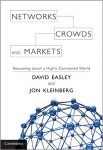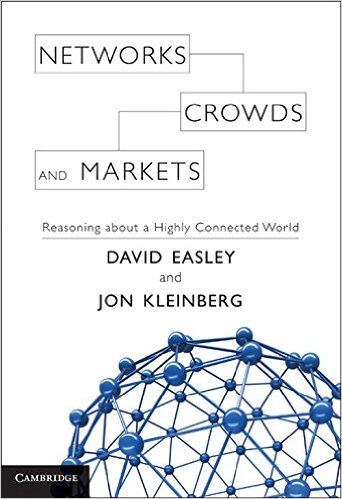 Authors: David Easley and Jon Kleinberg
Authors: David Easley and Jon Kleinberg
Publisher: Cambridge University Press – 727 pages
Book Review by: Sonu Chandiram
This is a fascinating and highly important book about a subject that not much if anything has been written about previously – our new, modern, highly interconnected world.
It is important that we understand it sufficiently enough so that we can not only avoid the dire consequences of miscommunication, including war, but also take advantage of the ease and speed of communication available today, to bring about a new era of peace, freedom from want, and healthy, prosperous lives for everyone on our planet.
The ‘highly connected world’ that the authors David Easley and Jon Kleinberg write about, consist of three present-day realities that did not exist before:
- The rapid growth of the Internet
- The ease with which global communication takes place today
- The ability of news to spread around the world with unsurpassed speed and intensity but this also includes the spread of epidemics as well as financial crises.
The three items mentioned above involve communication hardware and software (networks), groups of people (crowds), and incentives (markets, particularly the desire of people for profit).
Easley and Kleinberg point out in the Preface that there has been a ‘coming together’ of multiple scientific developments that have been motivated by the developments enumerated above. Some of the disciplines and what each one has contributed to our current interconnectedness are the following (partly quoting the authors):
- Applied mathematics and computer science – have helped develop “a framework for reasoning about how complexity arises, often unexpectedly, in systems we design.”
- Economics – has given rise to “a perspective on people’s behavior affected by incentives and by their expectations about the behavior of others.”
- Sociology and the social science research – have brought forth “insights into the characteristic structures and interactions that arise within groups and populations.”
The framework that has been developed, the perspective that has arisen, and the insights that have emerged from these different fields of study could be “the beginnings of a new area of study focusing on the phenomena that take place within complex social, economic, an technological systems,” the authors explain.
This book is based on a new course the authors developed at Cornell University and offered it at an introductory level to a broad student audience. The basic characteristics of this course are:
- The concepts are fundamental and accessible ones
- They are dispersed across the research literatures of the many different fields contributing to this topic
- The goal is to bring together the essential ideas in a single unified treatment
- Present the concepts and ideas in a way that requires as little background knowledge as possible
This is an extensive book that covers many and diverse topics in its 24 chapters. To give you an overview of its contents, we present below the titles of its seven Parts and the titles of each chapter therein
- Part I – Graph Theory and Social Networks: graphs, strong and weak ties, networks in their surrounding contexts, positive and negative relationships.
- Part II – Game Theory: games, evolutionary game theory, modeling network traffic using game theory, auctions.
- Part III – Markets and Strategic Interaction in Networks: matching markets, network models of markets with intermediaries, bargaining power in networks.
- Part IV – Information Networks and the World Wide Web: the structure of the web, link analysis and web content, sponsored search networks.
- Part V – Network Dynamics: Population Models: information cascades, network effects, power laws and rich0get-richer phenomena.
- Part VI – Network Dynamics: Structural Models: cascading behavior in networks, small-world phenomenon, epidemics.
- Part VII – Institutions and Aggregate Behavior: markets and information, voting, property rights.
This work, which developed out of the authors’ study of the various phenomena that constitute our present highly interconnected world, is now a textbook in an introductory undergraduate college course. We congratulate them for this.
Many aspects of our daily lives are influenced by communication, previously on local, regional, and national levels, but presently on a global level. A deeper understanding of the nature and scope of communications in our present world is absolutely essential to avoiding disasters and living happy, fulfilling lives. This book provides that understanding.







